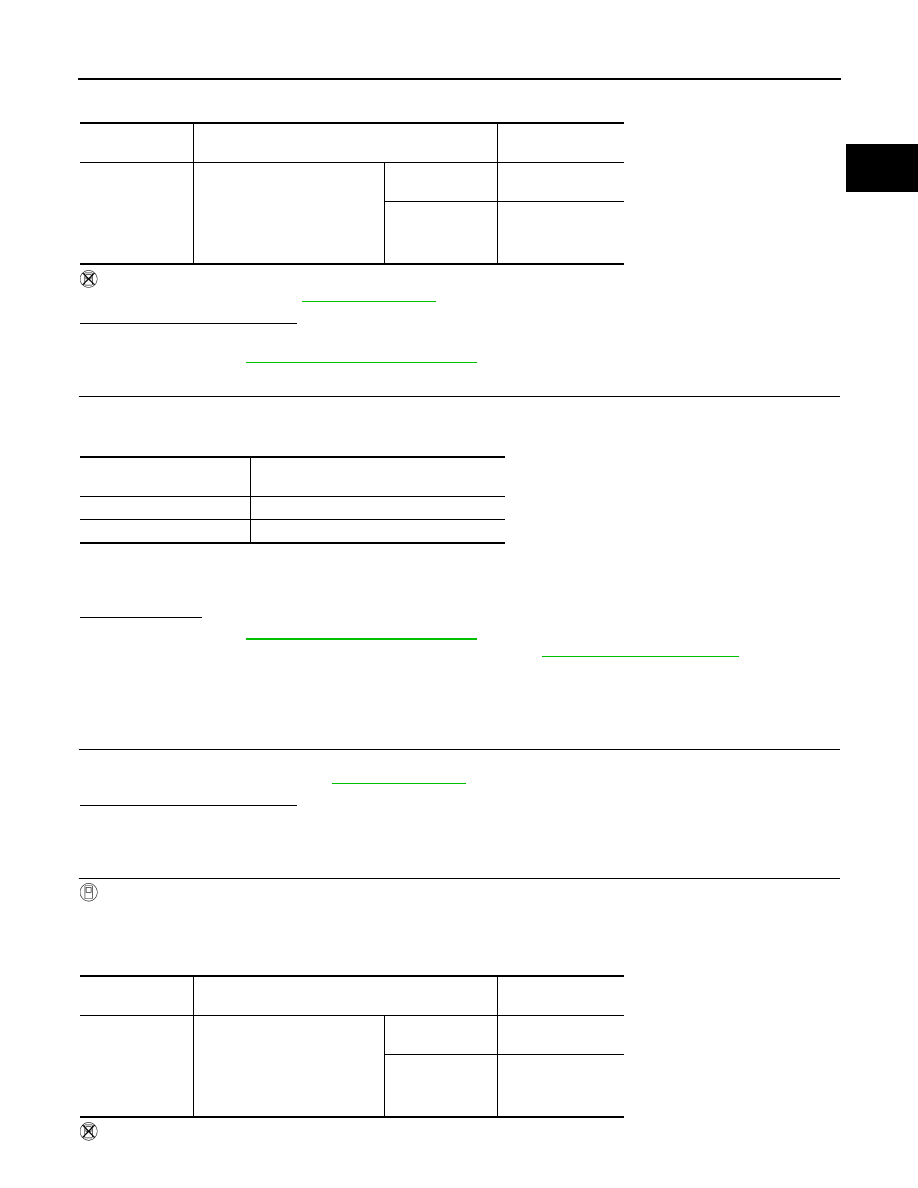Nissan Qashqai J11. Manual - part 329

P0524 ENGINE OIL PRESSURE
ECM-293
< DTC/CIRCUIT DIAGNOSIS >
[MR20DD]
C
D
E
F
G
H
I
J
K
L
M
A
ECM
N
P
O
3.
Start the engine and check that “EOP SENSOR” changes, according to engine speeds.
Without CONSULT
Check engine oil level. Refer to
.
Is the inspection result normal?
YES
>> GO TO 5.
NO
>> Proceed to
ECM-293, "Diagnosis Procedure"
.
5.
PERFORM DTC CONFIRMATION PROCEDURE
1.
Start engine and warm it up to normal operating temperature.
2.
Maintain the following conditions for at least 10 consecutive seconds.
NOTE:
With engine speed set around 4,000 rpm, the phenomenon can be reproduced more easily.
3.
Check DTC.
Is DTC detected?
YES
>> Proceed to
ECM-293, "Diagnosis Procedure"
.
NO-1
>> To check malfunction symptom before repair: Refer to
GI-41, "Intermittent Incident"
NO-2
>> Confirmation after repair: INSPECTION END
Diagnosis Procedure
INFOID:0000000010702982
1.
CHECK ENGINE OIL LEVEL
1.
Turn ignition switch OFF.
2.
Check engine oil level. Refer to
Is the inspection result normal?
YES
>> GO TO 2.
NO
>> GO TO 4.
2.
CHECK ENGINE OIL PRESSURE
With CONSULT
1.
Turn ignition switch ON.
2.
Select “DATA MONITOR” mode of “ENGINE” using CONSULT.
3.
Start the engine and check that “EOP SENSOR” changes, according to engine speeds.
Without CONSULT
Monitor item
Condition
Value
(Approx.)
EOP SENSOR
• Engine oil temperature: 80
°
C
(176
°
F)
• Selector lever: P or N position
(CVT), Neutral position (M/T)
• Air conditioner switch: OFF
• No load
Engine speed:
Idle
1,450 mV or more
Engine speed:
2,000 rpm
2,850 mV or more
Selector lever position
N or P position (CVT)
Neutral position (M/T)
Engine coolant temperature
70
°
C (158
°
F) or more
Engine speed
1,700 rpm or more
Monitor item
Condition
Value
(Approx.)
EOP SENSOR
• Engine oil temperature: 80
°
C
(176
°
F)
• Selector lever: P or N position
(CVT), Neutral position (M/T)
• Air conditioner switch: OFF
• No load
Engine speed:
Idle
1,450 mV or more
Engine speed:
2,000 rpm
2,850 mV or more